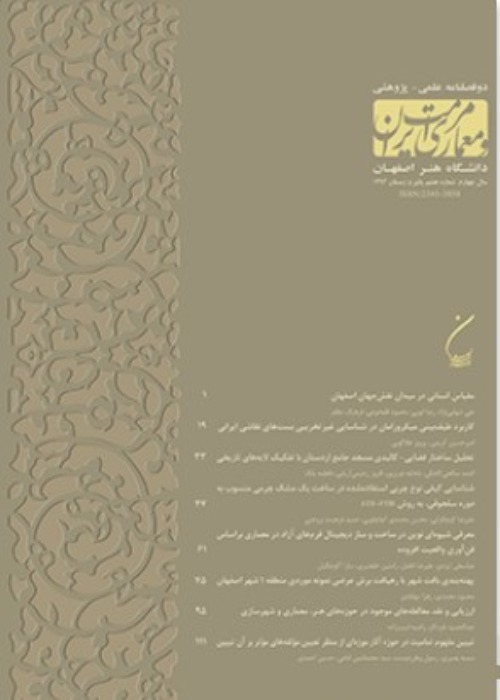The Principles of Conservation-based Organization of Historic Paths Through Benchmarking Method on Organization Experience of Iran and Other Countries (Case Study: The Organization of a Historic Roadway and Pathway in Isfahan under Status Assessment)
Paths are the most important urban spaces and account for the city and its historic district’s main structure. In the past, the geometry of historic cities revolved around old bazar rows and passages. However, with the advent of motorized vehicles and subsequent chess roads in historical texture, organic geometry and hierarchy of paths net, integrity and structure of historic district were disrupted. The main aim of this study is to provide optimal access while preserving the values of historical texture and this can be achieved through the establishment of a conservation framework for the organization of historic paths. This framework must cope with the conservation of historical identity, maintenance of human morale, dealing with social issues and at the same time providing access for motorists. The experience gained from reforming Iran’s historical paths shows that the main concern has been the provision of access for motorists. The inefficiency of past organizations, despite their enormous cost, necessitates benchmarking on global expriences to specify the principles of conservation-based organization of historical paths and to determine the similarities and differences between the reformation of Iran and the world. Without such a study, the vain cycle of organizing historic paths inefficiently could be repeated over and over again. In effect, studies reveal that one of the most important causes of stagnation and abandonment of the historical district is the inefficiency of its paths. To this date, no comprehensive conservation-based studies on the organization of the paths in Iran’s historical district have been carried out and the shortage of the research literature in this field is evident. This study compares, for the first time, the organization of the Iranian historic paths with that of other countries through benchmarking method. The purpose of the present study is to achieve the principles of conservation-based organization of the paths in historical textures. The method of data collection is library and empirical and this is a cross-sectional field study. The results showed that the organization of the Iranian paths is sketchy since it lacks planning and positive attitude towards conservation. In case study, the organization of pathway and roadway was also incomplete and of poor quality grade. In the end, the principles of conservation-based organization of the paths in historical texture and the essence of historical passages are presented as the framework for likely future organization project.
- حق عضویت دریافتی صرف حمایت از نشریات عضو و نگهداری، تکمیل و توسعه مگیران میشود.
- پرداخت حق اشتراک و دانلود مقالات اجازه بازنشر آن در سایر رسانههای چاپی و دیجیتال را به کاربر نمیدهد.



